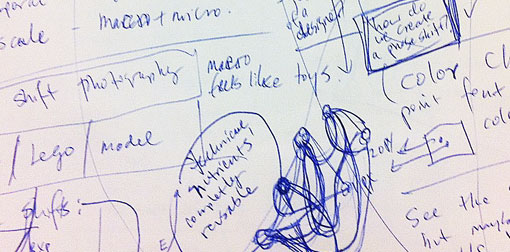A New System For Synthesizing
Posted on November 20, 2010 | posted by:Jamer Hunt, director of the Transdisciplinary Design program, recently introduced us to Evernote, a system for note taking and idea accumulation. As I set it up, I thought: Gmail has instant search. Delicious saves my links and lets me tag them. My pen writes quite well. Each has a specific purpose and does it well. Do I really need another web service? I skeptically continued, leaving evaluation for later, as a system of data is only as good as the data that goes in it.
In lectures, I jotted the speaker’s critical ideas prefaced with their initials and noted my ideas, prefaced with “me:”. I saved the full articles in Evernote, instead of saving just links to them in Delicious. With these, I tagged only the keywords that have the meaning of the article that are not actually in the article. For example, tagging a criticism of Freakonomics with “failure, lesson, complexity, outsider, transdisciplinary, ripple, effects”.
The serendipitous moment came when it was time to write my first paper: I realized I already had much of the ‘raw footage’, and instead of generating, I need to synthesize as Tim Brown explains in Change By Design. Searching ‘complexity’ and ‘systems’ in Evernote gave me specific ideas I had previously noted from 4 lectures, 3 articles and a systems diagram I’d created. It was the answer to the question: What use is an excellent note I’ve taken when it’s forgotten and scribbled somewhere in one of my notebooks?
However, with every pro there is a con and this system is no different. By exclusively typing my notes or taking photos after the fact, I lose the messiness, the feeling, and most importantly, the visual connections linking ideas. These are now replaced by a monotony of words in the same typeface or images still in isolation. Although this is a big issue, the net gain through centrality and immediacy is too tempting to set aside, and so I continue. I’m positive Evernote in its current form is only one stepping stone on the way to making our experience with the artificial more organic. To get there, we don’t necessarily need more information; we need better organized and visually connected information. I’m eager to experiment with ways of doing this…
Steven J. Dale
cstreams.com
@lifeinchords
